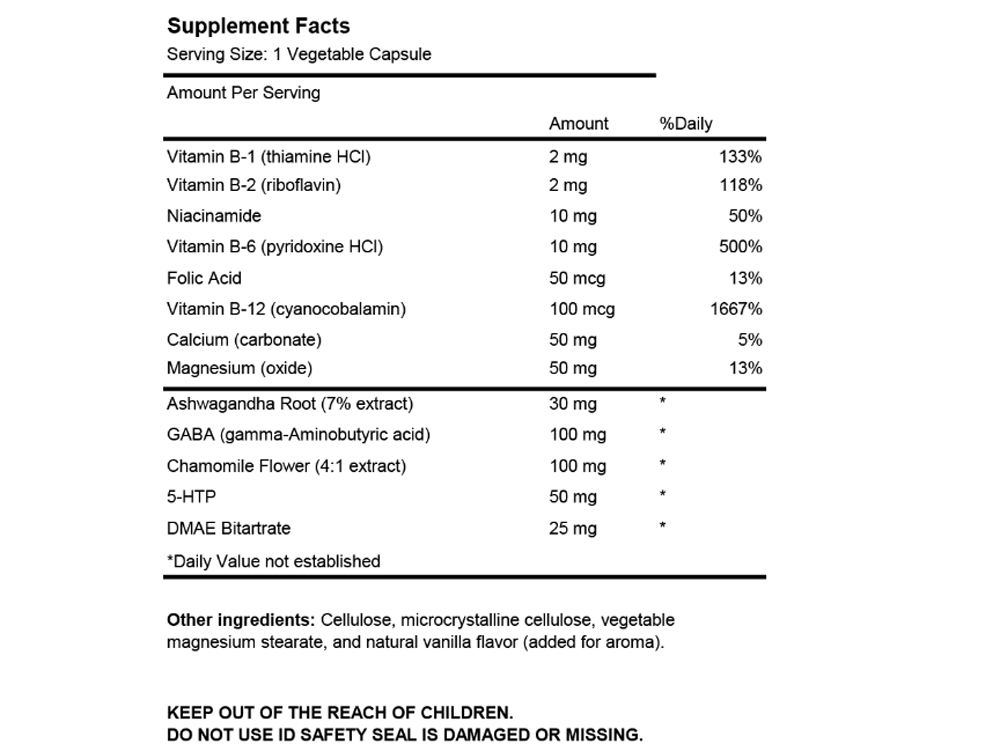Description

$39.99
GOOD MOOD FORMULA is a combination of specific ingredients intended to help enhance mood, reduce stress and improve sleep. Included in the formula are:
DMAE which helps with alertness and its positive influence on the mood.
GABA for its relaxing and anti-anxiety properties.
Chamomile concentrate to help reduce stress and improve sleep.
Ashwagandha, which is thought to have natural sedative properties.
5-HTP to help improve sleep and for its possible benefits in fighting depression.
B-Complex vitamins including B-1, B-2, B-6, B-12, folic acid and niacin for their many benefits in fighting stress and irritability, while helping to promote a positive mood.
Calcium and magnesium for their benefits in helping prevent mood swings and depression along with calming the body.
Good Mood Formula comes in fast dissolving vegetable capsules that allow the nutrients to enter the body quickly and effectively.
Servings per container: 30 veggie capsules
Serving size: 1 veggie capsule
See label for Supplemental Facts

Reviews
There are no reviews yet!